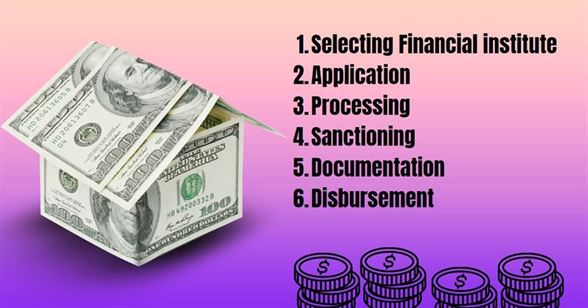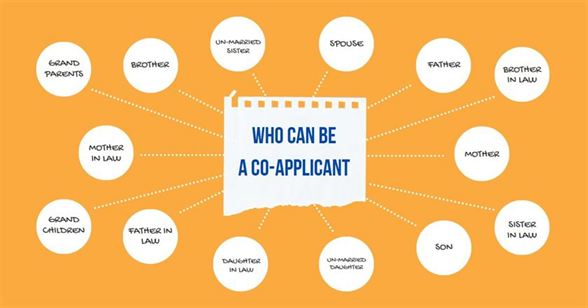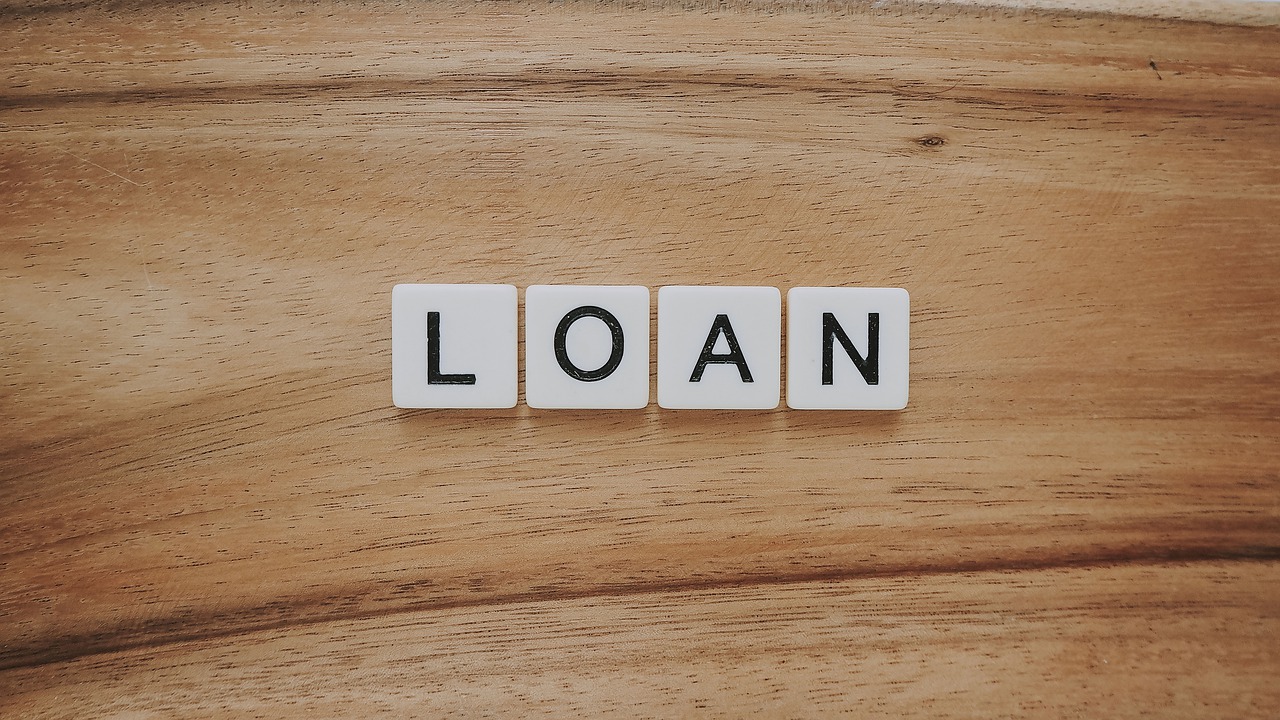Home Loan Process for Construction of Home and Purchase of Flat
Owning a home is a big dream for many people, but buying a home has various challenges at different levels. Most people find the process of taking a home loan very tough. From choosing the right bank to disbursement, it is important to have a clear understanding of the home loan process. In this article, we are going to explain, how to take a home loan and explain the home loan process in very simple language and provide a comprehensive guide about it. This article of ours will surely help you to understand the home loan process.
Table of Contents
What is the main purpose of a Home Loan?
- Purchase of a new or old House, flat, Bungalow, etc.
- Construction of a residential unit
- Purchase of a non-agricultural plot of land for subsequent construction of a house
- Extension of an existing House or Bungalow e.g. construction of additional floor, rooms
- A takeover of home loan
How many steps are in a Home Loan Process?

1. Selecting Financial institute:
- This is the initial step in the Home Loan Process where you provide basic information about your income, assets, and credit history to the financial institute.
- This step is designed to help you determine if you are eligible for a loan and what size loan you may qualify for.
- This can be done online or over the phone, and it does not require a credit check, so it does not affect your credit score.
- So on the basis of information received from financial institutes regarding loan amount, rate of interest, tenure, and loan-to-value percentage.
2. Application:
- Once you select a financing bank, you will need to complete a formal loan application to initiate Home Loan Process.
- This will require more detailed information about your financial situation, such as your employment history, income, and debts.
- You will also need to provide documentation such as pay slips, tax returns, and bank statements.
3. Processing:
- After you submit your loan application, the Home Loan Process starts by verifying your income, assets, and credit history.
- This step may include checking your credit report and contacting your employer to verify your employment.
- Reviewing your bank statements to confirm your assets.
4. Sanctioning:
- Once your loan has been sanctioned, you will receive a loan sanction letter which are having terms and conditions, you should read it thoroughly.
- You have to send acceptance to the sanction letter of your loan.
5. Documentation:
- This is the last step of the Home Loan Process, once you accept the sanction letter the bank will prepare loan documentation.
- Mortgage formalities will be done by yourself at the Sub Registrar’s office as per the bank’s instruction.
- After the mortgage, you must submit it to your local land record officer like Talathi, etc for noting of charge.
6. Disbursement:
- Finally, after completing the Home Loan Process and executing all legal documents and mortgage, you have to request for disbursement of the loan amount as per your disbursement schedule.
- You should submit stage wise progress report of construction by your engineer.
- Bank officials may visit for further disbursement at every stage to confirm the end use of funds.
Who can be a Co-Applicant or Co-Borrower in Home Loan?

- Resident Indian citizens and non-resident Indians.
- Individuals may apply singly or jointly with other eligible individuals.
- All the proposed co-owners of the property for which the loan is being applied, have to mandatorily join as applicants to the loan.
- The income of these co-applicants can be considered for the purpose of calculating of the eligible loan amount.
- The following family members are permitted to join as applicants/co-applicants for Home Loan.
- Spouse
- Father
- Mother
- Son
- Daughter in law
- Unmarried-daughter
- Father in law
- Mother in law
- Brother
- Unmarried sister
- Brother in law
- Sister in law
In addition to the above If the property is in joint names of following the they must be taken as Co-Applicants
- Grandparents
- Grandchildren from son
Minimum and Maximum age to apply for Home Loan
The minimum age of the borrower should be 18 years because in India loan agreements can be signed by a person who has completed 18 years of his age as per the Indian Contract Act. The maximum permissible age at end of repayment for both the salaried and non-salaried classes borrowers is 75 years. The age of the applicant is generally not a determining factor in whether or not they are eligible for a home loan. However, the age of the applicant may affect the terms of the loan, such as the interest rate or the length of the loan.
Generally, lenders prefer to lend to borrowers who are younger and have a longer time horizon in which to repay the loan. This is because younger borrowers are more likely to have a stable income and a longer time to repay the loan, which reduces the risk for the lender. Some lenders may have minimum age requirements for borrowers, so it is a good idea to check with the lender to see if there are any specific age requirements that apply to the loan you are considering.
What is the maximum limit of a Home loan?
There is no upper limit on the quantum of loan given for the purchase/construction of a residential unit or purchase of a plot of land and construction thereon. The maximum loan amount will be decided based on the repayment capacity of the borrowers and the cost of the house/plot of land/repairs/renovation.
How to Calculate the amount of the loan based on income?
The income of any applicant/co-applicants can be considered for arriving at the eligible loan amount, provided it is a regular source of income. All the individuals, whose income is being considered for arriving at the eligible loan amount, have to necessarily join in as applicants / co-applicants to the loan irrespective of whether they are co-owners of the property or not. There are a few different factors that lenders consider when calculating the amount of a loan based on income in India:
Debt-to-income ratio:
This is the percentage of your monthly income that goes towards paying off debts, including the proposed home loan. Lenders generally prefer a lower debt-to-income ratio, as it indicates that you have more disposable income to make your loan payments.
Credit score:
Your credit score is a measure of your creditworthiness, and lenders use it to assess your risk as a borrower. A higher credit score may make you eligible for a larger loan amount.
Employment history and stability:
Lenders want to see that you have a stable income and a good employment history. This may affect the amount of the loan you are eligible for.
Down payment:
The amount of money you are able to put down as a down payment on the property can also affect the size of the loan you are eligible for. A larger down payment may allow you to qualify for a larger loan.
Type of loan:
The type of loan you are applying for may also affect the amount of the loan you are eligible for. For example, a mortgage with a fixed interest rate may allow you to borrow a larger amount than a mortgage with an adjustable interest rate. To calculate the amount of the loan you are eligible for based on your income, you will need to consider all of these factors and work with a lender to determine the most appropriate loan amount for your situation.
Income-proof Documents are required for Salaried Persons in Home Loan Process
- Income is taken as per the last three months’ salary slip / latest ITR / Form 16 for calculating eligible loan amount or repayment capacity.
- Regular income (salary/pension) is only to be considered for arriving at the eligible loan amount.
- However, other income which is either appearing in the Salary slip/ Form -16 / IT Return such as bonus, variable pay, performance/production linked incentives, other allowances,, etc. may be included in the salary income on the basis of the average of the last two year’s Form -16/ IT Return for the purpose of calculation of eligible loan amount.
- Any other regular source of income such as rent, agricultural income, etc. can be considered provided the same is reflected in ITR. In case such income is from the
current financial year, then the same is to be duly supported by documents and bank statements.
Income-proof documents are required for Business Person to Process a Home Loan
- ITR for the last three years required regularity/stability of income.
- If the variation in income is less than 25% then the Latest income as per ITR is considered for arriving at the eligible loan amount/repayment capacity.
- If the variation in year-on-year income is more than 25% then the average of the last three years’ income is considered for calculating loan amount/repayment capacity.
- ITR must be with supporting documents like the P&L, Balance Sheet, Computation of Income, etc. also to be obtained for assessment.
What are the income documents required for Home Loan Process who have an agriculture income?
- In case agricultural income is not reflected in ITR or ITR is not filed, a certificate issued by the revenue authority as per respective state law can be considered as proof of income and accordingly the income may be considered for arriving at eligible loan amount/repayment capacity.
- In most states, Tahashildar or Taluka Revenue authority issues the income certificate.
Livelihood Expenses before Calculating EMI
- The total amount of your net income is never considered for EMI while calculating the eligible loan amount/repayment capacity, some amount is to be set aside for the purpose of regular sustenance of the borrower and his family.
- The amount for your livelihood is calculated as follows:
The amount for livelihood = Livelihood Percentage * Income Net of Taxes
Livelihood Expenses Percentage is depending on the Income level of all the applicants and most of the banks accept the percentage as follows:
| Annual Gross Income | Livelihood Expenses Percentage |
| Up to Rs3 lakh | 45% |
| Rs3 lakh to Rs12 lak | 35% |
| Above Rs12 lakh | 25% |
*There may be a slight variation from bank to bank.
Calculation of eligible loan amount is the main part of the Home Loan Process
| A | Salaried: Income as per latest salary slip/pension x 12 or income as per latest income tax return (ITR) Self-employed: Latest/Average of gross annual income as per income tax return (ITR) of last three years Wherever applicable, sanctioning authority may also include 50% of the bonus component (annual) and 100% of any other regular source of income Anticipated rental income may also be included, for both salaried and self-employed |
| B | Salaried: Tax as per latest salary slip x 12 or tax as per latest income tax return (ITR) Self-employed: Latest/Average of annual tax paid |
| C | Income after taxes (A-B) |
| D | Total of all the latest EMI / installments (including principal & interest) for all loans even from other banks |
| E | Other installments of life insurance premium, contribution to PF, Mutual Fund SIP, etc. |
| F | The amount for Livelihood Expenses (Already Explained above) |
| G | The maximum amount available for proposed loan repayment annually [C-(D+E+F)] |
| H | Maximum EMI allowed for the proposed loan (G/12) |
Eligible Home Loan Amount
I | Loan amount in lakh for the maximum EMI allowed in H = (Maximum EMI allowed for the proposed loan i.e. Value in H) / (EMI per lakh for given tenure and applicable interest rate) |
| J | Cost of property proposed to be purchased/project cost less margin |
| K | Loan amount requested by the borrower |
Eligible Home Loan Amount = Lower of I, J, and K
Margin
| Loan Amount | Margin (Minimum) |
| Up to 30 lakh | 10% |
| Above 30 lakh | 20% |
For composite project i.e. purchase of plot and subsequent construction thereon
The margins for the plot and construction have to be maintained separately. If the borrower has contributed more than the margin required for the purchase of the plot or if it has been purchased by the applicant entirely from their own sources, the amount in excess of the required margin for the purchase of the plot can be considered as a margin towards construction.
Components of project cost considered for Home Loan
- The cost of residential property will include the basic cost of the house and only those elements which add towards the value realizable from the sale of the property.
- For example, elements such as the cost of car parking, the cost of permanent furniture and fixtures, Solar systems, etc. may be considered in arriving at the total cost of the property.
- The project cost of the Home Loan will not include charges like stamp duty, registration charges, documentation charges, Maintenance Deposits, etc.
- GST applicable on under-construction properties can be added as a part of the project cost for evaluating the loan amount.
Repayment Tenure for Home Loan in India
- For all the purposes mentioned above in the first paragraph other than repairs/renovation, the maximum repayment tenure under the floating rate option is 30 years.
- The maximum repayment tenure, under floating rate loans for repairs/renovation of an existing residential unit, is 15 years.
- The residual life of the property should be 5 years more than the repayment tenure. In other words, the loan repayment must end at least 5 years before the end of the residual life of the property as per the valuation report.
Moratorium Period for a Home loan for Construction
- The maximum moratorium period (within the total repayment tenure) permitted for all purposes is 24-36 months.
- For composite home loans i.e. construction of a house on the plot purchased by the borrower should be completed either within a maximum period of 48 months from the date of first disbursement.
- In the case of the purchase of the completed residential unit, no moratorium is permitted.
- Interest charged from disbursement to commencement of EMI is to be recovered separately. Servicing interest during the moratorium period is mandatory.
- After completion of the moratorium period, the borrower has to start repayment of the loan, irrespective of the status of construction/repairs/renovations/extensions, etc. (i.e. even if the work is not complete, the repayment has to begin).
- Interest is to be serviced during the moratorium period as and when debited to the loan account.
- The borrower is to undertake to repay the interest amount as and when debited to the loan account.
- In case there is any interest remaining unrecovered in the loan account, the same should be recovered in full before releasing of subsequent disbursement or commencement of EMIs, whichever is earlier.
Different Repayment Methods for Home Loans
After the moratorium period, the borrower has to start repaying the loan by way of EMI as fixed on the original loan amount.
Equated monthly installments (EMI):
This is the most common method of home loan repayment. Under this method, the borrower pays a fixed amount every month to the lender until the loan is fully repaid. The EMI includes the principal amount and the interest charged on the loan.
The borrower may opt for the following modified repayment methods:
Step up Repayment Method for Home Loan:
This method enables the borrower to have a repayment schedule where for the initial few years the EMI is set at a value lower than the normal EMI and for the remaining tenure it is set at a level higher than the normal EMI so as to ensure that the loan is adjusted within the stipulated tenure. The basis for doing so is that the income of an individual increase over a period of time.
Note that the Step-Up Repayment Method is to be used only for the purpose of repayment. The assumption of an increase in income will not form the basis for arriving at a higher eligible loan amount. The eligible loan amount will be calculated only based on the current income levels.
Balloon Repayment Method:
This method enables the borrower to have a repayment schedule where the EMI is set at a value lower than the normal EMI. Due to a lower-than-normal EMI, at the end of the repayment tenure, there will be some amount that will remain outstanding/unadjusted. This amount is then to be adjusted by making a lump sum payment. The lower EMI must be set taking into account the lump sum amount expected to be available at end of repayment tenure.
Flexible Loan Installment Plan (FLIP) Method:
Like the Balloon Repayment Method, the FLIP method enables the borrower to have a repayment schedule where the EMI can be at a value lower than the normal EMI after receiving a lump sum payment midway into the tenure.
For example: suppose a borrower has availed a loan of Rs 30 lakh for 20 years at an ROI of 9% p.a. Here the normal EMI works out to around Rs 26992. Let us assume that the borrower makes a payment of Rs 4 lakh after the first 3 years. Thus, if the outstanding after making the lump sum payment will be around Rs 25.43 lakh, the bank may now set the EMI at a revised level of around Rs 24382.
Thus, in this case, the borrower pays the normal EMI of Rs 26992 for the first 3 years, and later after making a lump sum payment the EMI is reduced to Rs 24382.
Bullet Payment:
In times when there is an increase in interest rates, the following scenarios can emerge:
- EMI is adequate to liquidate the loan with a small residual balance at the end of the original tenure.
- The EMI is just equivalent to the interest applied every month; resulting in non-payment of the principal amount.
- EMI is less than the interest applied every month; resulting in an addition to the principal amount.
In the above situation
- Allow home loan borrowers, upon their specific request, to continue to pay the existing EMI.
- Permit a lump-sum bullet payment at the end of the tenure towards the residual outstanding, if any.
In some cases of the situation mentioned above it is not possible to continue with the existing EMI. It is therefore necessary to opt for one of the following:
Increase EMI to a level where the loan can be repaid within the existing tenure.
OR
Increase EMI to a level where the borrower can pay a small residual amount at the end of the tenure.
OR
An option can be given to the borrowers to make an immediate lump sum payment (to be assessed on a case-to-case basis) so that the current EMI can take care of the reduced outstanding or some residual amount can be paid as bullet repayment at the end of the tenure.
The above option will add to the flexibility available to the borrowers and help them manage their finances suitably.
Rate of Interest (ROI)
The rate of interest on a home loan can vary depending on a number of factors, including the lender, the type of loan, the borrower’s credit score and financial history, and the location and type of property being financed.
In general, home loan rates are lower than rates on other types of loans, such as personal loans, car loans, mortgage loans, business loans etc because the loan is secured by the property being purchased.
There are two types of home loan rates which are fixed rates and floating rates. A fixed-rate loan has an interest rate that remains the same throughout the life of the loan, while a floating-rate loan has an interest rate that can change over time.
Currently, all the interest rates of all banks are linked to the repo rate of the RBI and the bank decides External Benchmark Lending Rates (EBLR) by adding a risk premium to the repo rate. All banks have introduced different rates of interest based on the CIBIL score of the applicant/co-applicant.
External Benchmark Lending Rate (EBLR) is a rate that is used as a reference for setting the interest rates on loans extended by financial institutions. The use of EBLR allows the interest rates on loans to be more transparent and more closely tied to market conditions, which can help to ensure that the rates being charged to borrowers are fair and reasonable.
Home Loan for Purchase of Plots and Construction thereon
Home loan for Purchase of NA plot from Government Bodies/Agencies or Development Authority/MHADA/CIDCO/HUDCO
- Construction of the house on the plot should commence within six months from purchase & be completed within a period of 24-48 months from the date of first disbursement or up to the period allowed by Development Authority.
- If no construction work is undertaken for a period of 48 months from the date of first disbursement then the loan is to be recalled.
- The government body/agency or development authority concerned should undertake to deliver the originally registered title deed to the bank directly.
- NOC from the development authority is mandatory for the creation of a mortgage.
Purchase of NA plot from private developers for the construction of the house.
- The developer/builder of the project should be RERA registered entity with a good track record in terms of quality, delivery, and market reputation.
- The project should not be in any kind of litigation and should be as per the development plan of the area. The layout should conform to the land use stipulated by the town and country planning department for housing projects.
- All necessary statutory clearances such as approval of layout, construction permission, etc. by the competent authority, environmental clearances if any should be available.
- Once the plot is purchased all necessary approvals for the construction of the house such as the building plan and construction of the house should be completed within a maximum period of 48 months from the date of first disbursement.
- If construction work is not commenced within a period of 48 months from the date of purchase of the plot/land, the loan is to be recalled.
Purchase of non-agricultural residential plots from private individuals
- All necessary statutory clearances such as approval of layout by the competent authority, environmental clearances for the plot, etc. should be available.
- Once the plot/land is purchased all necessary approvals for the construction of the house such as the building plan and construction of the house should be completed within a maximum period of 48 months from the date of first disbursement.
- If the timeline mentioned above is not met, then a penalty in the form of commercial ROI as per guidelines is to be charged from the date of first disbursement till such period that the condition is not satisfied.
Size of plot
The bank considers proposals, where the plot is being purchased from private entities and the size of the plot, is more than 5000 sq. ft. but the loan amount (after margin) will be restricted up to of cost of 5000 sq. ft. portion.
Further, the area occupied by the constructed residential structure is not to be less than 30% of the total area of the plot/land. If the area of the plot is more than 5000 sq. ft., the minimum area of construction should be 1500 sq. ft.
Fees/Charges
| Processing charges | Generally, it is 0.50% to 1.00% in all banks for processing of loans, it is collected before disbursement of the loan. Most of the time banks waive processing charges under different campaigns and offers. |
| Prepayment charges | Nowadays I think no bank charge Prepayment charges |
| Take-over penalty | 2% Take over penalty may charge bank |
| Overdue charges | Overdue charges of 2% on overdue installments |
| Review charges | No review charges for home loans |
| Legal and valuation charges | Legal and valuation charges is payable to Advocate and Valuer, all banks fixed these charges. |
| Stamp duty on security and mortgage documents | Stamp duty and mortgage charges depend on the respective state. All the state has different charges. |
| CERSAI charges | CERSAI charges for creating charges on the CERSAI portal may be around Rs. 50/- to 100/- |
| Inspection Charges | Inspection charges for inspection of securities, residential addresses, and business or office addresses. It ranges between Rs. 1000 to Rs. 2000/- |
| Documentatation Charges | Documentation charges are for all loans because one has to execute and safely keep these documents. |
| CIBIL Charges | CIBIL website is charge Rs. 50+GST for generating CIBIL report so the bank also charges it from the customer. |
Some of you may be thinking that if the bank is charging interest then why banks are charging all these charges, In actual bank is charging interest only for the loan amount used by you over a period of time and all these charges are for different services they give you in addition of just borrowing money.
Security for Home Loan
- A home loan is secured by way of a simple mortgage or equitable mortgage.
- If the sale deed is not available in the case of the ancestral property then the loan is secured by Simple Mortgage.
- Where the sale deed is available then the loan is secured by an Equitable mortgage and this equitable mortgage is registered by a Notice of intimation to the Sub Registrar. Bank will verify all these sale deeds by the bank’s advocate.
- After execution of the above mortgage copy of this mortgage will be sent to the Land record Department for noting of charge on the property card or 7/12.
- Flat properties of development authorities like MHADA, CIDCO, and HUDCO will be mortgaged after getting NOC from these authorities for creating a mortgage.
Valuation of Property in Home Loan Process
- Valuation report to be obtained from the bank’s panel valuer at the time of sanctioning the loan in case if you are purchasing a ready-built home or a second-hand home and in all other cases after completion of construction.
- Valuation charges are to be borne by the applicant.
- In case of a tie-up with the builder or the project is approved by the bank then valuation is to be obtained at the time of the project approval process. The project cost of the house has already been approved by the architect/engineer/valuer and accepted by the Bank.
Legal search report for Home loan
A legal search report is a document that provides information about the legal status of a property that is being used as collateral for a home loan.
The report is typically obtained by the bank’s empanelled lawyer and is used to ensure that the property is free and clear of any legal issues that could affect the bank’s interest in the property.
The seller’s title to the property must be clear and transferable. Also, on the transfer of title to the borrower, it must be possible for a bank to create a valid enforceable mortgage. Empanelled advocates also check the genuineness of title deeds.
The legal search report will typically include information such as:
- The property’s title and ownership history.
- Any outstanding mortgages or liens on the property.
- Any land use restrictions on the property.
- Any rights affecting the property.
- Any pending legal actions or disputes involving the property.
Obtaining a legal search report is an important step in the home loan process, as it helps to ensure that the bank’s interest in the property is secure and that there are no outstanding issues that could affect the bank’s ability to foreclose on the property if the borrower defaults on the loan.
Insurance of the Property is compulsory in Home Loan
Property insurance for a housing loan is insurance that protects the property that serves as collateral for the loan. This type of insurance is typically required by the lender as a condition of the loan, and the cost of the insurance is typically included in the loan payments.
The purpose of property insurance for a housing loan is to protect the lender’s interest in the property in case of damage or loss. If the property is destroyed or damaged by an event such as a fire, storm, or theft, the insurance will cover the cost of repairing or rebuilding the property, up to the policy limit. This ensures that the lender’s collateral remains intact and that the loan can be repaid even in the event of a loss.
The types of events that are covered by property insurance for a housing loan will vary depending on the policy, but typically include common hazards like fire, wind, hail, and theft. Some policies may also provide coverage for additional perils such as earthquakes and floods, but this is not always the case and it is important to check with your lender or insurance company.
It’s also worth noting that in some cases, the borrower will be required to maintain insurance on the property throughout the life of the loan, and may be required to provide proof of insurance coverage to the lender on a regular basis.
Credit Life Insurance / Home loan Insurance for borrower’s life
Credit life insurance is a type of loan insurance that is specifically designed to protect the borrower in case of death. If the borrower dies while the loan is still outstanding, the insurance policy will pay off the remaining balance of the loan. This can provide peace of mind for the borrower and their family, as it can help them avoid the added stress of worrying about how to pay off the loan in the event of the borrower’s death.
Credit life insurance is typically offered as an optional add-on when a borrower takes out a loan, and the cost of the insurance is included in the loan payments. The coverage and terms of the insurance will vary depending on the lender and the type of loan, so it’s important to carefully review the details of the policy before deciding to purchase it.
Take-over of Housing Loan
Following are some points considered by banks before taking over home loans:
- The account with the other bank must be regular in repayment of interest and installments.
- Sanction letter of the loan with the other bank to be obtained.
- Statement of the loan account for the last 12 months.
- Letter from the customer/borrower to the other bank instructing them to directly send the title deeds to our financing branch.
- Value as per the latest valuation of the property.
- Loan amount not to be more than amount outstanding with another bank.
- Additionally, if required for further construction/ repairs/ renovations, can be sanctioned while taking over, subject to repaying capacity and margin norms.
- The reason for the take-over of account must be properly justified like interest rates.
List of Documents required for Home Loan
- Application Form
- Basic information like existing loan details, own property details, etc.
- KYC documents for each applicant/co-applicant/guarantor.
- PAN card
- Identity proof (Voters ID / Passport / Aadhaar etc.)
- Residence proof (Driving license/ Passport/ Aadhaar etc.)
- Office / Business address proof
- Latest passport-size two photographs
- Aadhaar card
- For salaried – Income proof (Form16, latest 3 salary slips)
- For other than salaried – Income proof (last 3 years ITR).
- Bank statement of last 6 months.
Property documents required for Home Loan
- Agreement to sell/Allotment letter.
- Copy of property ownership documents:
- Title deed
- Original Sale Deed
- Agreement to Sale
- Share Certificate(s) issued by the society
- all the original documents must be in the possession of the owner/seller.
- Advance payment receipts
- Copy of approved plan by local body
- NOC from Builder / Developer / Society
- Approval of construction of proposed residential unit as per state laws
Documents required for take-over of Home Loan from other Bank:
- Sanction letter
- Statement of account for last 12 months.
- List of documents (LOD) held with the Bank.
- Authority letter from the applicant authorizing the Bank to directly hand over the security documents to our Bank’s authorized officials.
- Any additional documents as per property and borrowers.
What information banks verify before considering Home Loan: Due Diligence
- Documents collections
- Resident verifications
- Business/employment verification
- Salary slip/form 16 verification
- PAN& Bank statement verification
- ITR verification
- Property due diligence
Disbursement in Home Loan
- First of all, you have to execute all the legal documents for a home loan.
- You have to pay stamp duty for every document as per state stamp duty law.
- Bank officials will tell you how many stamps should be attached to specific documents.
- After signing all the loan documents, the bank opens a loan account in its CBS to generate a home loan account number.
- You have to submit a request letter for every disbursement to the branch manager.
- Bank asks you to keep margin money in your savings account.
- Saving an account with Bank is mandatory in some banks for availing home loan.
- Bank disbursed the loan amount and transfers the amount along with the margin money to a builder.
- Customers will be required to keep sufficient balance in the account to debit valuation charges, legal charges, processing fees (if any), CERSAI charges Insurance, etc.
- Banks never allow debiting the loan account towards any of the charges.
- Where the property is under construction, the disbursements must be made in stages as per the stage of construction of the residential unit.
- The bank carried out an inspection of the property, each disbursement and visit.
- DD can be handed over by bank officials directly to the seller at the time of Registration of the sale deed.
Conclusion
In short, getting a home loan is difficult, but if you want to own your own home, you have to go through this process. If you want to make the home loan process easier, it is important to know about the different types of loans available and what you need to do to get them. You can also talk to a financial expert who can help you understand everything and make better decisions. By taking your time and making smart choices, you can get the money you need to make your dream home come true.
Frequently Asked Questions
Q1. How many days it will take to process a home loan?
Ans: The home loan Sanction process may take 17-20 working days. Bifurcation is as follows Legal opinion (4 days), Valuation (3 days), Processing of loan (7-8 days), legal documentation (2 days)
Q2. What are the stages of loan approval?
Ans: 1. Selecting Financial institute, 2. Application, 3. Processing, 4. Sanctioning, 5. Documentation, 6. Disbursement.
Q3. What is the final step in the loan process?
Ans: Execution of legal documents is the final step of the home loan process.
Q4. Home loan process time?
Ans: It takes 17-20 working days, and if you buy a flat in the bank’s approved projects this will take hardly 4-5 days time.
Q5. Home loan disbursement process.
Ans: Home loan disbursement is stage-wise disbursement in which the bank releases the amount by progress in construction.
Q6. How long are banks taking to approve loans?
Ans: Banks may take 4-5 days for approval of your home loan.
Q7. Can I reject a loan after applying or after approval?
Ans: Yes you can reject a loan after applying even after sanctioning but the bank may ask you to pay processing charges.




